Contents
What is Blender?
No, this is not a post about kale shakes. I’m not talking about that type of blender, and I hope you won’t leave with a bitter taste in your mouth.
I’m talking about the open-source 3D modeling, animation, visual effects, and gaming software. With our Unity and Maya courses introducing you all to game development, I thought this might be a nice time to mention Blender. You can think of Blender like an open-source version of Maya. I like to think of Blender like a Swiss Army Knife of 3D—it does most things (modeling/sculpting, rigging, animation, rendering, compositing, and game creation) relatively well, but it doesn’t specialize in any one thing.
Because Blender is an open-source, jack of all trades application, doubters assume you can’t produce anything that looks professional. I’ll let you check out the most recent Blender demo reels and decide for yourself.
Personally, I think that the Blender demo reels look amazing. Some of the top Blender work stands up against pieces done in Maya or any other application. On top of Blender’s capabilities, it is open-source. Now, I’ve mentioned that already, but what’s the deal?
Open-source
Put simply, open-source means that the software is freely available for everyone to use and modify as they wish. Open-source software powers much of the Web via open-source operating systems such as Linux and FreeBSD and open-source frameworks such as Rails, Laravel, and Django, which are built with the open-source languages Ruby, PHP, and Python respectively. We interact with open-source software all the time.
When it comes to Blender, open-source means you’re getting an incredible application for the low low price of zero dollars.
I support and use Blender in large part because it is open-source. More than the irresistible price tag, open-source applications offer communities organized around helping each other to achieve common goals. Whereas commercial products provide you a customer support line, open-source software is being developed by people who are motivated by passion for the software. You can even contribute to the software yourself if you have the programming chops.
Most Blender users are not programmers; they are artists. Among Blender artists, the open-source ethos is still present. I have found an abundance of people willing to help, teach, and share tips and tricks.
How to Get Started
Training
OK, you want to try it out, but isn’t Blender hard to learn? Yes, yes it is. I wish I could say that Blender has a gentle learning curve, but it doesn’t. For that matter, I don’t think any of the 3D programs are easy to learn. In a way, this is another plus for Blender. Because Blender is free, you can try working in 3D at no cost beyond your own time. You get a chance to see if you actually like doing this stuff before you drop a ton of money on software.
Hey, you’re on Treehouse, and it can’t be any harder than learning to program, right? You’re not afraid. So, where should you go for some tutorials?
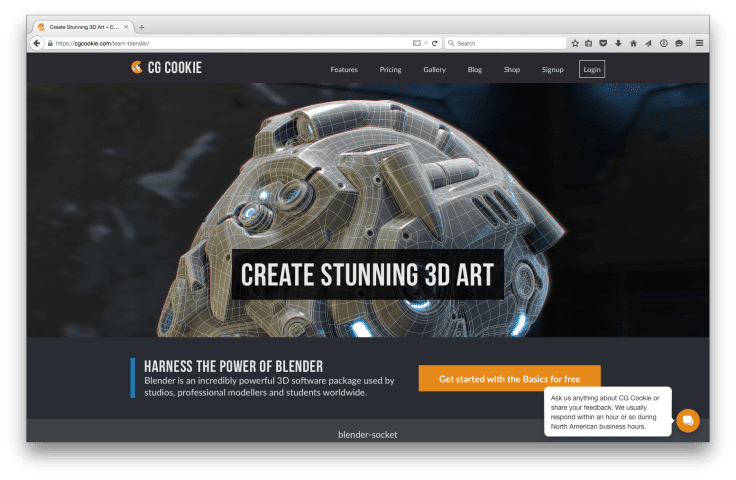
On the Blender site, you will find links to several tutorials. Their introductory course is provided by CG Cookie, which is a site offering tutorials for digital artists. Their Blender content is thorough, and it’s done by some talented artists who create really stunning pieces. They recently redesigned their platform to mimic a Treehouse-style format with badges and steps, so it should be somewhat familiar.
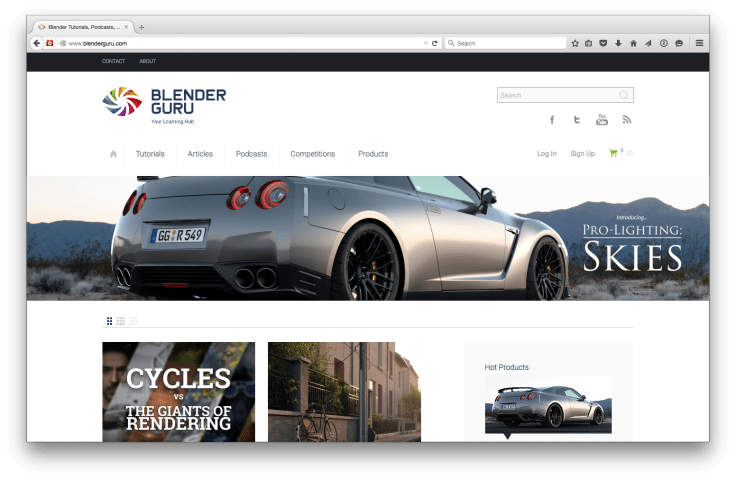
Blender Guru is a site run by Andrew Price. Andrew’s tutorials are thorough and especially impressive when considering he was a team of one for years. Price offers many free tutorials that focus on creating or understanding one concept. He also offers packs on larger more involved topics such as rendering environments.
If you go full steam ahead with Blender and want to really dive in, there is also the Blender Cloud. Blender Cloud offers tutorials as well as access to assets and training related to the Blender Open Projects (more on those later).
Forum
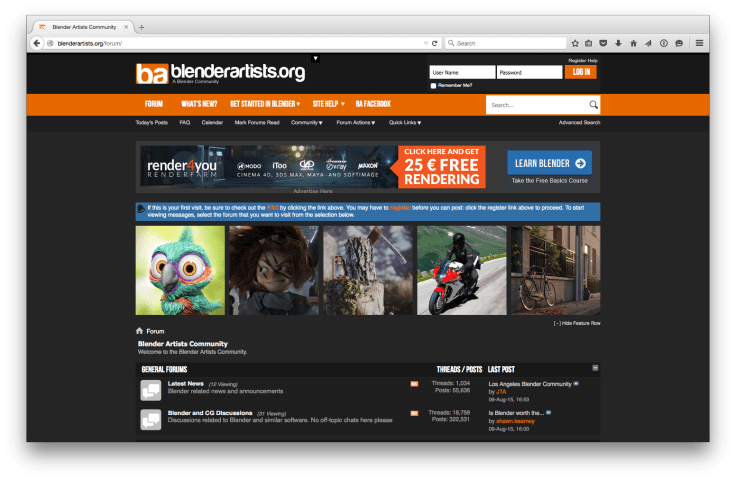
The Blender Artists forum is a great resource for all things Blender. I have been pointed to helpful tutorials, seen amazing work, and been steered back on track several times on the Blender Artists forum. For a sense of the Blender community, start by poking around here. Additionally, the forum posts paid and volunteer work requests.
Assets
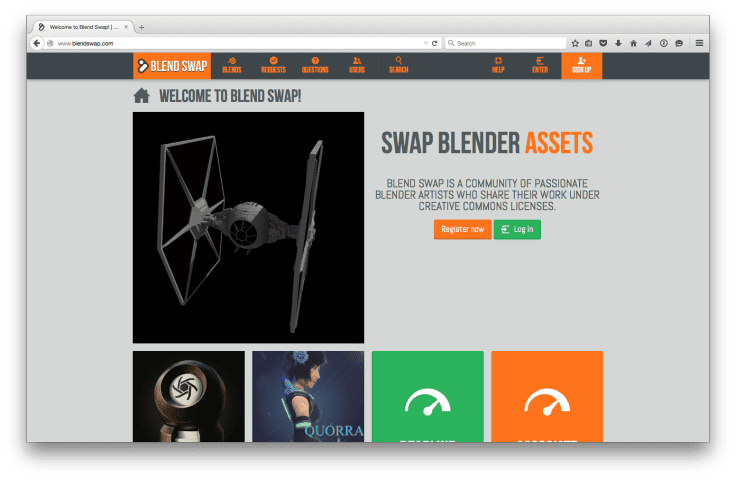
Maybe you need some assets to fill a scene. Maybe you want to practice rigging a character, but you don’t want to spend the time modeling it. Blend Swap to the rescue. Blend Swap is a resource for sharing Blender assets. You can get everything from furniture to fully rigged characters. Each asset has different licensing attached, but often the artists want nothing more than a proper credit. This is a great way to get going when you don’t have time to model and texture everything you need.
Looking at other people’s models is also a great way to learn. By seeing something created by someone with more experience and skill, you can dissect what he or she has done to further inform your own creative solutions.
Blender Open Projects
The Blender Foundation, the non-profit group that keeps Blender going, organizes Open Projects. The organization pulls together some of the best artists using Blender and funds their work on a project. So far they have created five short films (one live-action and four animated) and one game. The sixth film is currently in production. Why do this? Open Projects allow Blender to keep growing as a piece of software. These projects push the software by creating a project the community can focus on. As artists find limitations in the software, they make requests to the Blender development team. The developers do their best to add the needed functionality. As a result, we all benefit from these projects when we use Blender for our own work. You can check out all of the Blender projects on the Blender site (remember, they’re meant to improve software—not screenwriting).
Why isn’t everyone using Blender?
Wow, Blender is awesome, right? Why isn’t everyone using Blender? Let’s not sugarcoat things. Blender is not an industry standard application. Most 3D software is not a one-stop-shop. Rather, 3D applications are part of a production pipeline that includes many other applications. Each application tends to excel at one or two things. Blender is not part of that pipeline for most big game, animation, and visual effects companies. If your goal is to get a job at one of the top companies, having Blender on your resume won’t be particularly helpful.
All is not lost if you use Blender
Blender is still a great place to start. The essentials of 3D are the same no matter which application you use. Understanding modeling, rigging, texturing, and the principles of animation is necessary to be good with any piece of 3D software. If you learn those things with Blender, they will translate to other applications.
Further, if you’re an independent game developer, animator, or artist, no one needs to know what you use to create your assets. You can work in Blender all day. If your stuff looks good, no one will know the difference if all they see is the end-result.
Some Things to Know Before You Start
Blender underwent a pretty massive UI overhaul with the release of version 2.5. As a result, you should pay attention to the version you are using when looking for tutorials, assets, and information. If you find things aimed at Blender version 2.49 or earlier, the information will likely be less useful.
Blender comes with two different render engines by default: Internal and Cycles. The Blender Internal render engine is the original rendering engine for Blender. It provides less photo-realistic renders than Cycles, but it can still be handy for quick renders and desired effects. The Cycles render engine was included with Blender as of version 2.61. Cycles is a ray-trace renderer that is quickly eclipsing the internal render engine with its photo-realistic results. Most new tutorials you find will be done using Cycles, so be aware. If nothing in this paragraph makes sense yet, don’t worry, you’ll get to rendering engines once you start working.
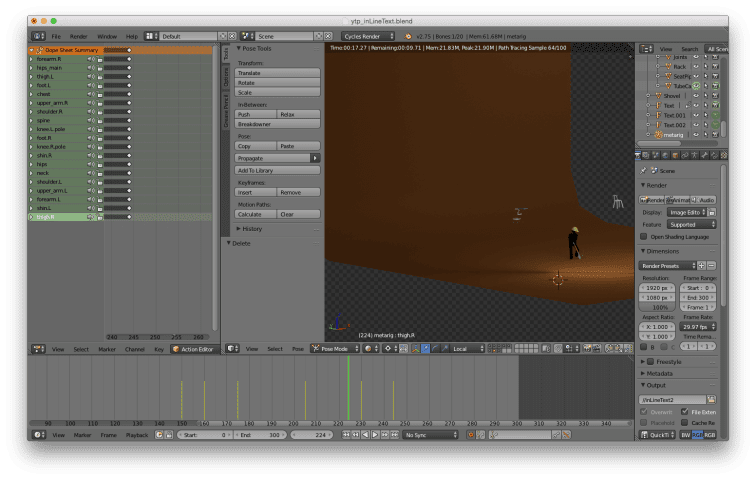
I Love Blender, and You Might Too
If you’re curious about 3D, I hope you’ll give Blender a try. You might be surprised at what an open-source piece of software can achieve. I do less and less work with graphics as my time and priorities shift, yet, every time I check in to see what’s new with Blender I’m blown away.
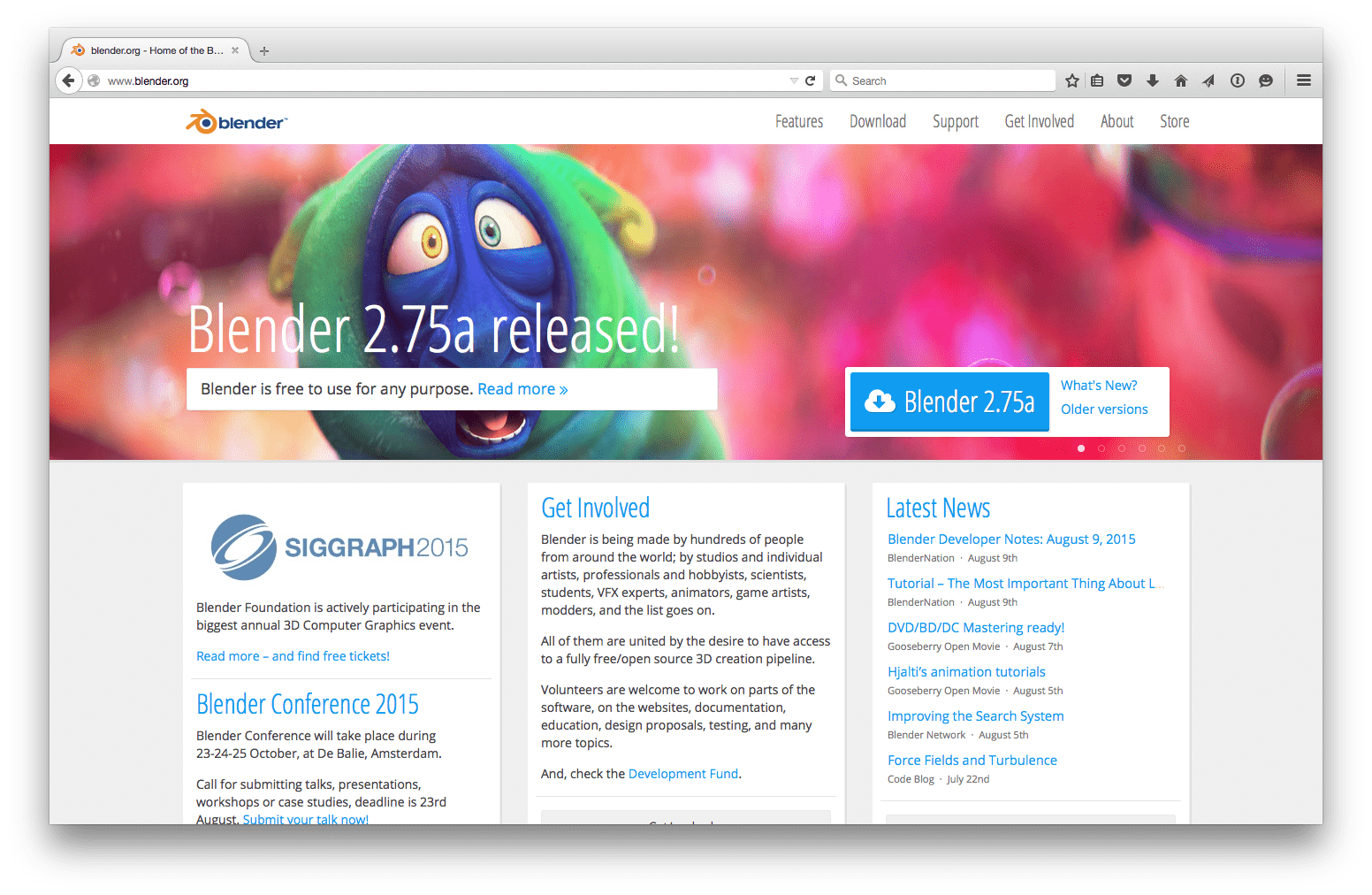
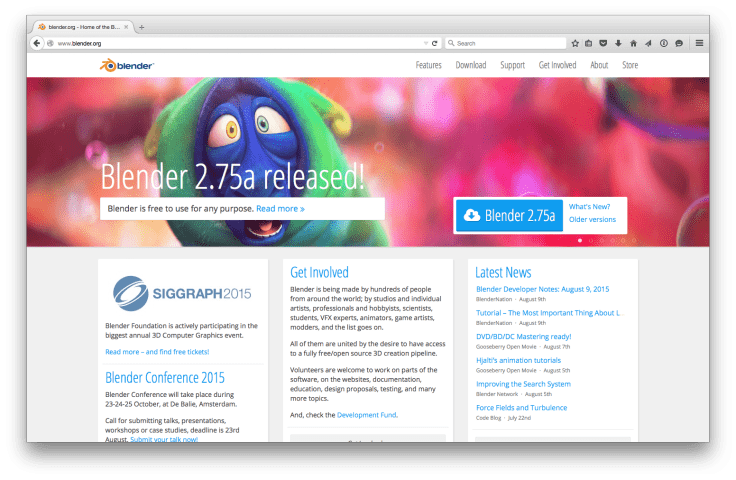
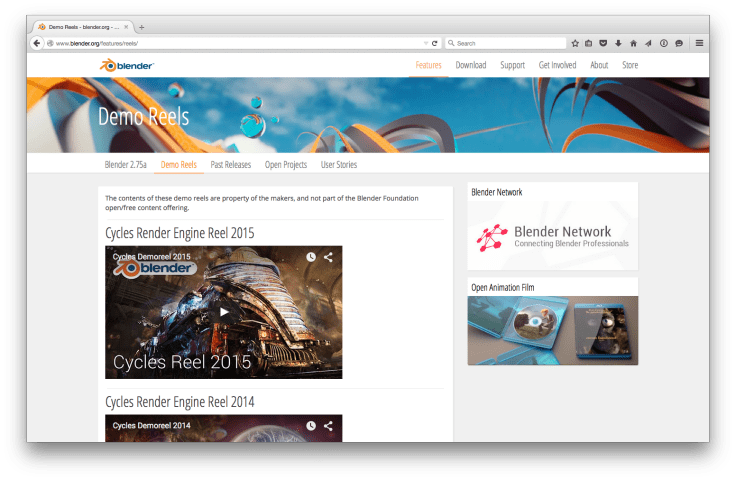







Yes, please, add a Blender course!!!
Are there any plans for a Blender course on Treehouse in the near future? Maybe hooked into the game creating course.
Hi Suleiman! There aren’t any plans for the immediate future, but we’ll certainly pass the request along to our teaching team. Thanks! 🙂
Cheers Faye 🙂